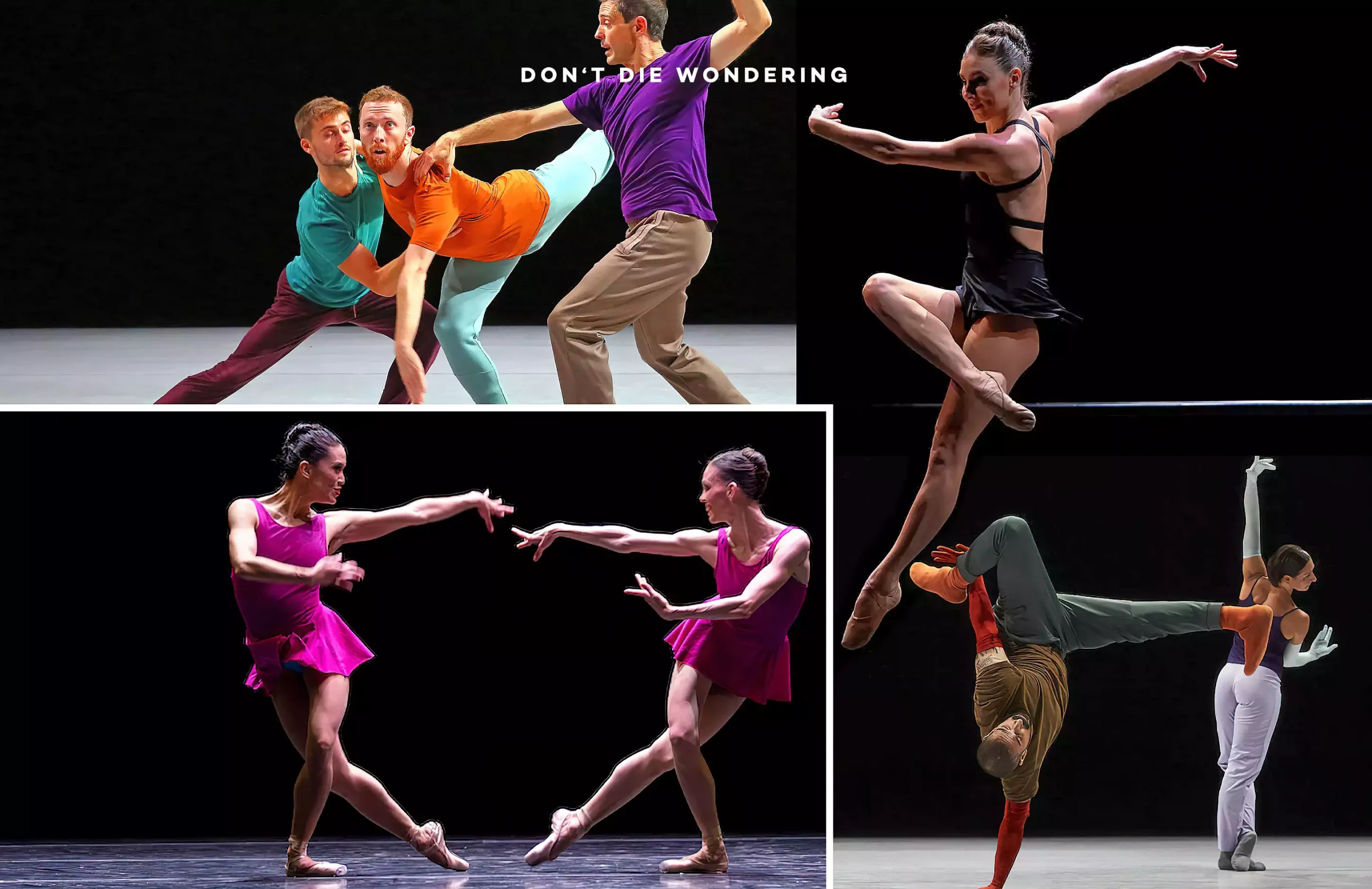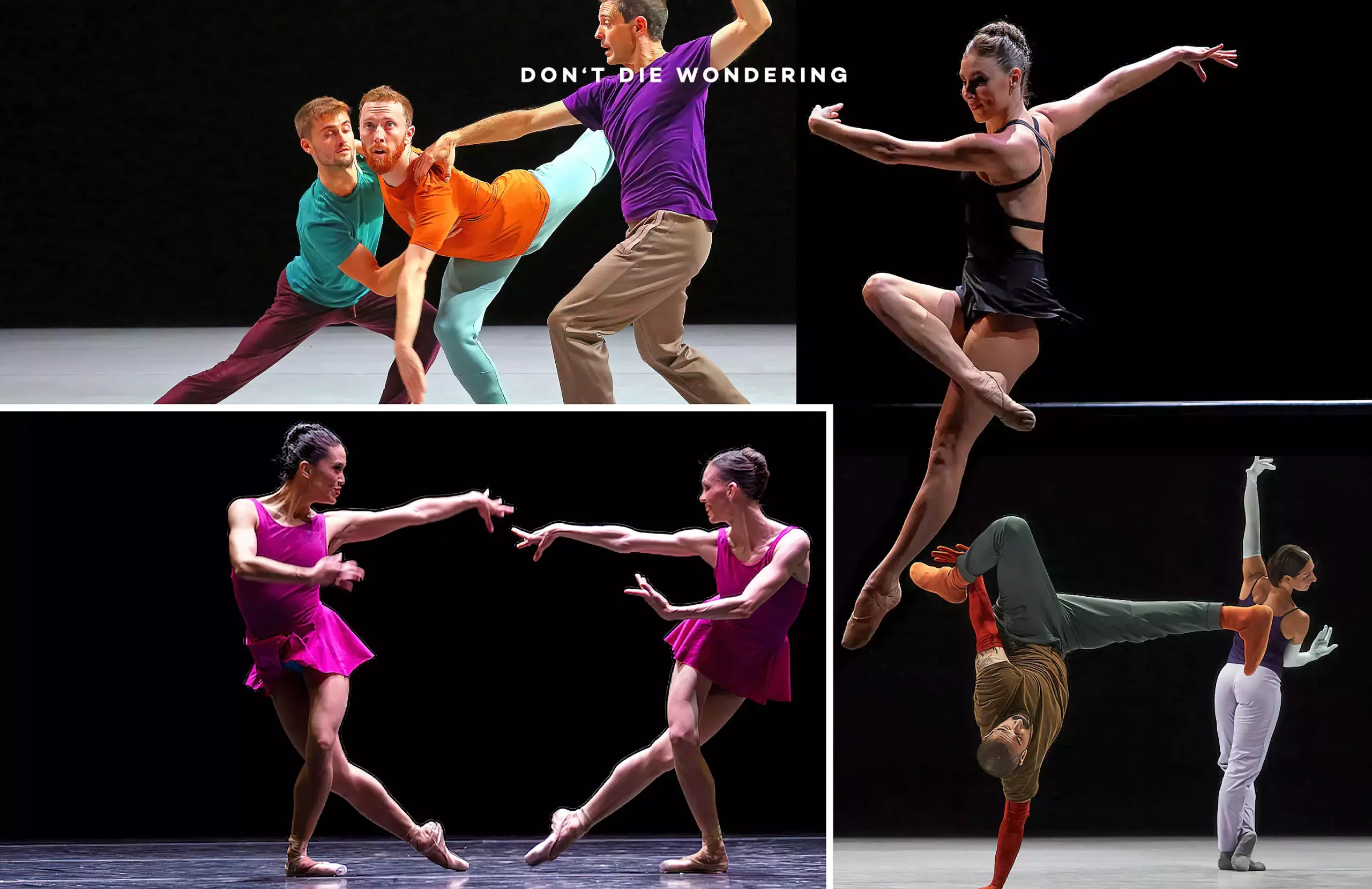William Forsythe’s show at Sadler’s Wells will disrupt everything you think about ballet.
The art and cultural scene has always had to figure out how to stay current and relevant. This burden of adaptability and verve has produced street art, NFTs and, back in the day, it produced the ballet. Not the cherished cultural jewel that it once was, the intricate dance form was considered to be at the pinnacle of social calendars and the most distinguished and graceful of movements. Opera houses and ballet halls were built so that it was easy to spot and recognise those in the audience – people wanted to be seen at the ballet.

We have forgotten how to enjoy the ballet. And it shows. William Forsythe – arguably the most absorbing of today’s choreographers – seems frustrated with the erosion of ballet from mainstream culture and is playing games with the art form. Having built a 40-year career on creating explorative and contemporary ballets, speckled all over with smooth cultural references and pop music, the 72-year-old former ballet and club dancer (stripper, briefly) brings A Forsythe Evening to London. Now so recognised in the world of ballet that he can simply announce a ballet named after himself, the American choreographer worked with English National Ballet on the show at Sadler’s Wells. With an ensemble cast presented over a double bill, the show arrives with Forsythe’s characteristic finger on the pulse of today’s most compelling and relevant trends, music and cultural traditions. Imagine, if you can, classical bravura with cheeky infusions of jazz, burlesque and showgirl movements.
A Forsythe Evening presents itself in two parts. The first features Blake Works I, with seven songs from James Blake’s The Colour in Anything. Each song draws its own response and a new cast of dancers assembles on stage each time to produce it. In duets, trios or ensembles, they reveal narrative movements to the music, often tender, sensitive and complex. The stage design is simple and minimal through the entire ballet, using mostly light to create mood and atmosphere. Forsythe also took charge of costume design and the cast of are dressed for Balanchine in pale blue tights and vests with skater skirts for the women – except for when Isaac Hernández casually saunters on stage in jeans and a t-shirt for his duet with Emily Suzuki.

The second piece expands from its 2018 form to include Playlist (EP), six music tracks ranging from Khalid’s Location and Lion Babe to Barry White, and up to 30 dancers on stage. Originally an all-male piece, the addition of female dancers for this new iteration does feel a little less seamless as the truly remarkable moments are still carried by the male dancers. In hot pink and shimmery blue costumes, the dancers are aided by the lighting, movements and general aesthetic, which all seem to reference both the 80s music scene and exercise culture (I’m thinking of John Travolta and Jamie Lee Curtis in James Bridges’ 1985 movie, Perfect). As many have already noted, the second half or Forsythe’s latest ballet is essentially one big dance party.
Believe me when I say that this may be the most uproarious ballet you will ever go to. During the second half, the crowd regularly breaks out in applause as the performance continues. There are cheers, claps and sing-a-longs. The energy of the room is more like that of a West End musical. At the end the audience is fulling belting out and bouncing in their seats to Natalie Cole’s hit This Will Be (An Everlasting Love). Some are on their feet during the performance and, though usually not the case at the ballet, it is fully acceptable. If ever there was a time to investigate an interest in the ballet, Forsythe is it. Think of it as a masterclass, easing you in while still at the top end of skill and choreography. Accept, though, that what you see is an unusual subversion of classical dance tradition – the kind of celebration not easily found in the work of his contemporaries.

This ballet marks the choreographers own return to classical ballet after himself venturing far into experimentation and exploration in his work. ‘I want to make ballet more popular’, Forsythe recently told The Guardian in an interview. ‘I want it to be something people look forward to rather than just enduring.’ Alluding to the fact that ballet has lost it proverbial grip on contemporary intrigue, we can take his words as a sign to expect more disruptive mainstreaming of ballet from the choreographer.


